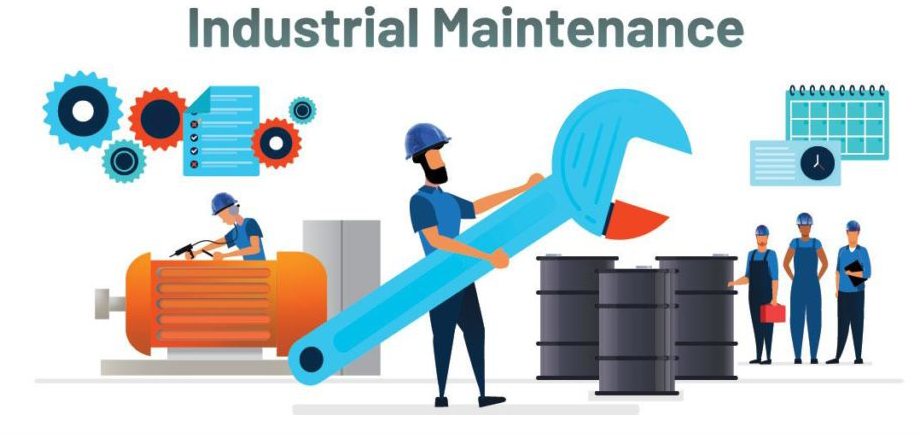
Industrial maintenance, also called plant maintenance, is the process of implementing processes to reduce breakdowns, increase uptime, and promote overall reliability. In other words, maintenance is the general process of ensuring that assets are kept in good working condition.
When a piece of equipment keeps running at its expected capacity, production operations are likewise sustained. Having a maintenance plan reduces maintenance costs, maximizes uptime potential, and ultimately increases profitability.
Relying on a third-party service contractor to repair failed components after the fact is not a sustainable maintenance plan. In addition to the high servicing costs with third-party contractors, this approach puts you at a higher risk of unscheduled downtime from a sudden, unexpected failure.
A proper maintenance plan can identify maintenance tasks that prevent failures in the first place, saving your company more in the long term.
maintenance tasks are carried out vary depending on the maintenance strategy that an organization chooses to practice. Here are three examples.
Reactive Maintenance
As the name suggests, reactive maintenance is concerned with tasks that come after a piece of equipment breaks down. The advantage of reactive maintenance is that the initial costs are significantly lower. Maintenance tasks are only carried out when a machine is already showing signs of poor performance.
The downsides of reactive maintenance outweigh the short-term benefits. The cost of performing minimal maintenance is the likelihood of irreversible damage from sudden failure. These failures typically result in production losses, with worse cases leading to the damage of critical equipment. For assets that are essential for operations, perform reactive maintenance only as a last resort.
Preventive Maintenance
The goal of having a more proactive approach in maintenance is to mitigate potential causes of failure before they even occur. A preventive maintenance (PM) strategy requires doing tasks proactively according to a usage- or calendar-based schedule. One common example is getting an oil change in your car after running for a certain number of miles.
PM tasks can significantly reduce unplanned downtime by avoiding conditions that cause breakdowns. This also reduces the risk of catastrophic failure with a reactive approach. By investing in a PM strategy, maintenance costs are reduced compared with when acting reactively. Savings are realized when factoring in safety standards, productivity losses, and total repair costs.
Like with getting an oil change for your car, by following a plan you can avoid more costly problems.
While a traditional PM program has its strengths, there is still room for improvement. Schedules based on usage or time can potentially trigger tasks to be carried out unnecessarily. To optimize the amount of servicing required , perform a more sound analysis with the availability of data and information, such as in a reliability-centered maintenance strategy.
Reliability-Centered Maintenance (RCM)
Reliability-centered maintenance (RCM) is one of the more specialized forms of proactive maintenance ―with an emphasis on being proactive. Similar to a traditional PM strategy, RCM aims to avoid failures by analyzing the best actions to take. Think of RCM as a game plan that develops tailor-made maintenance strategies, depending on what best suits the particular equipment.
RCM takes into account the criticality of an asset alongside potential causes of failure and corresponding corrective actions. The result is that equipment within the same facility could be assigned different maintenance strategies. This way, you are able to more efficiently allocate resources where needed. In contrast, PM sets rather rigid schedules on when maintenance tasks should be performed.
For RCM to be effective, it requires more information about your assets compared to reactive or preventive maintenance. The smart way to obtain and analyze data about your equipment is with the use of computerized maintenance management system (CMMS) software. With a CMMS, you can keep track of which types of equipment are assigned which types of maintenance strategies. For example, non-critical and redundant equipment such as light bulbs can be handled reactively. Other consumables with known failure patterns and lifespans can be assigned with calendar-based PM tasks.

